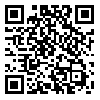1. Miri A, Rangriz H, Sabzikaran E. The relationship between organizational structure and employees' empowerment in National Iranian Oil Products Distribution Company. Kuwait Chapter of Arabian Journal of Business and Management Review. 2011 Sep;33(831):1-8. [
Article] [
Google Scholar]
2. Bolghanabadi S, Pour M. The relationship between musculoskeletal disorders, stress and fatigue in the food industry employees. Iranian Journal of Ergonomics. 2014 Jun 15;2(1):54-63. [
Article] [
Google Scholar]
3. Farhadi S, Hesam G, Moradpour Z, Abazari M, Babayi Mesdaraghi Y. Estimating the maximum aerobic capacity of fire fighters using the step test; a case study with height adjustable steps. Journal of Ergonomics. 2016; 4(2):60-5. [
DOI:10.21859/joe-0402438]
4. Mazloumi M, Mehri A, Morovati S. The relationship of health behavior with self-esteem and self-efficacy in students of Yazd Shahid Sadooghi university of medical sciences (2005).5 [
Article] [
Google Scholar]
5. Nasiry Zarrin Ghabaee D, Haresabadi M, Bagheri Nesami M, Talebpour Amiri F. Work-related musculoskeletal disorders and their relationships with the quality of life in nurses. Journal of Ergonomics. 2016; 4(1):39-46. [
DOI:10.21859/joe-04015]
6. Salimi S, Hasheminejad N, Kangavari M, Kian MP, Mohammadpour H. Comparison of the Results of Three Observational Methods of Assessment of Musculoskeletal Disorders: A Case Study in the Steel Industry. Qom University of Medical Sciences Journal. 2016 Jun 10;10(3):81-7. [
Article] [
Google Scholar]
7. Aghilinejad M, Choobineh AR, Sadeghi Z, Nouri MK, Ahmadi AB. Prevalence of musculoskeletal disorders among Iranian steel workers. Iranian Red Crescent Medical Journal. 2012 Apr;14(4):198. [
Article] [
PMID] [
PMCID] [
Google Scholar]
8. Kroemer AD, Kroemer KH. Office ergonomics: ease and efficiency at work. City of Publisher: CRC Press; 2016. [
DOI:10.1201/9781315368603]
9. Brouwer S, Amick BC, Lee H, Franche RL, Hogg-Johnson S. The predictive validity of the return-to-work self-efficacy scale for return-to-work outcomes in claimants with musculoskeletal disorders. Journal ?. 2015; 25(4):725-32. [
DOI:10.1007/s10926-015-9580-7] [
PMID] [
PMCID]
10. Tims M, Bakker AB, Derks D. Daily job crafting and the self-efficacy-performance relationship. Journal of Managerial Psychology. 2014 Jul 8. [
DOI:10.1108/JMP-05-2012-0148]
11. Jin X, Hahm S. The effect of authentic leadership on organizational commitment and organizational citizenship behavior in the jt industry: the moderating effects of self-efficacy. Journal ?. 2017; 20(6A):3823-34.
12. Fisioterapia CS, de Madrid A, La EU, de Madrid A, La Touche R, Salud CS, La Salle EU. How does self-efficacy influence pain perception, postural stability and range of motion in individuals with chronic low Back pain?. Pain physician. 2019 Jan;22:E1-3. [
Article]
13. Costal LD, Maherl CG, McAuleyl JH, Hancockl MJ, Smeetsl RJ. Self‐efficacy is more important than fear of movement in mediating the relationship between pain and disability in chronic low back pain. European Journal of Pain. 2011 Feb;15(2):213-9. [
DOI:10.1016/j.ejpain.2010.06.014] [
PMID]
14. Descatha A, Roquelaure Y, Chastang JF, Evanoff B, Melchior M, Mariot C, Ha C, Imbernon E, Goldberg M, Leclerc A. Validity of Nordic-style questionnaires in the surveillance of upper-limb work-related musculoskeletal disorders. Scandinavian journal of work, environment & health. 2007 Feb;33(1):58. [
DOI:10.5271/sjweh.1065] [
PMID]
15. Paterson DG. The Scott Company graphic rating scale. Journal of Personnel Research. 1922; 1:361-76. [
Google Scholar]
16. Shakarkan H, Arshadi N. Transportation research part F: traffic psychology and behaviour. Journal ?. 2007; 14:129-48.
17. Sherer M, Maddux JE, Mercandante B, Prentice-Dunn S, Jacobs B, Rogers R. The self-efficacy scale: Construction and validation. Journal ?. 1982; 51(2):663-71. [
DOI:10.2466/pr0.1982.51.2.663]
18. Gangi A, Farahani M. The relationship between job stress and self Efficacy with life satisfaction in gas accident workers from Isfahan Gas Company. Journal ?. 2010; 2(3):15-24. [
Google Scholar]
19. Klussmann A, Steinberg U, Liebers F, Gebhardt H, Rieger MA. The Key Indicator Method for Manual Handling Operations (KIM-MHO)-evaluation of a new method for the assessment of working conditions within a cross-sectional study. BMC musculoskeletal disorders. 2010 Dec;11(1):272. [
DOI:10.1186/1471-2474-11-272] [
PMID] [
PMCID]
20. Asghari M, Omidiyani Doust A, Farvaresh E. Evaluation of the musculoskeletal disorders in the workers of a food manufacturing plant in Tehran. Occupational Medicine Quarterly Journal. 2012; 3(4):49-54. [
Article] [
Google Scholar]
21. Authors ?. The prevalence of musculoskeletal disorders and occupational risk factors in Kashan SAIPA automobile industry workers by Key Indicator Method (KIM). Journal of Health and Safety at Work. 2012; 2(1):27-36. [
Google Scholar]
22. Choobineh A, Rajaeefard A, Neghab M. Association between perceived demands and musculoskeletal disorders among hospital nurses of Shiraz University of Medical Sciences: a questionnaire survey. International Journal of Occupational Safety and Ergonomics. 2006 Jan 1;12(4):409-16. [
DOI:10.1080/10803548.2006.11076699] [
PMID]
23. Munabi IG, Buwembo W, Kitara DL, Ochieng J, Mwaka ES. Musculoskeletal disorder risk factors among nursing professionals in low resource settings: a cross-sectional study in Uganda. BMC nursing. 2014 Dec;13(1):7. [
DOI:10.1186/1472-6955-13-7] [
PMID] [
PMCID]
24. Odebiyi DO, Akanle OT, Akinbo SR, Balogun SA. Prevalence and impact of work-related musculoskeletal disorders on job performance of call center operators in Nigeria. The international journal of occupational and environmental medicine. 2016 Apr;7(2):98. [
DOI:10.15171/ijoem.2016.622] [
PMID] [
PMCID]
25. Black O, Keegel T, Sim MR, Collie A, Smith P. The effect of self-efficacy on return-to-work outcomes for workers with psychological or upper-body musculoskeletal injuries: a review of the literature. Journal of occupational rehabilitation. 2018 Mar 1;28(1):16-27. [
DOI:10.1007/s10926-017-9697-y] [
PMID]
26. Martinez-Calderon J, Zamora-Campos C, Navarro-Ledesma S, Luque-Suarez A. The role of self-efficacy on the prognosis of chronic musculoskeletal pain: a systematic review. The Journal of Pain. 2018 Jan 1;19(1):10-34. [
DOI:10.1016/j.jpain.2017.08.008] [
PMID]
27. Lisbona A, Palaci F, Salanova M, Frese M. The effects of work engagement and self-efficacy on personal initiative and performance. Psicothema. 2018;30(1):89-96. [
Article] [
Google Scholar]
















































